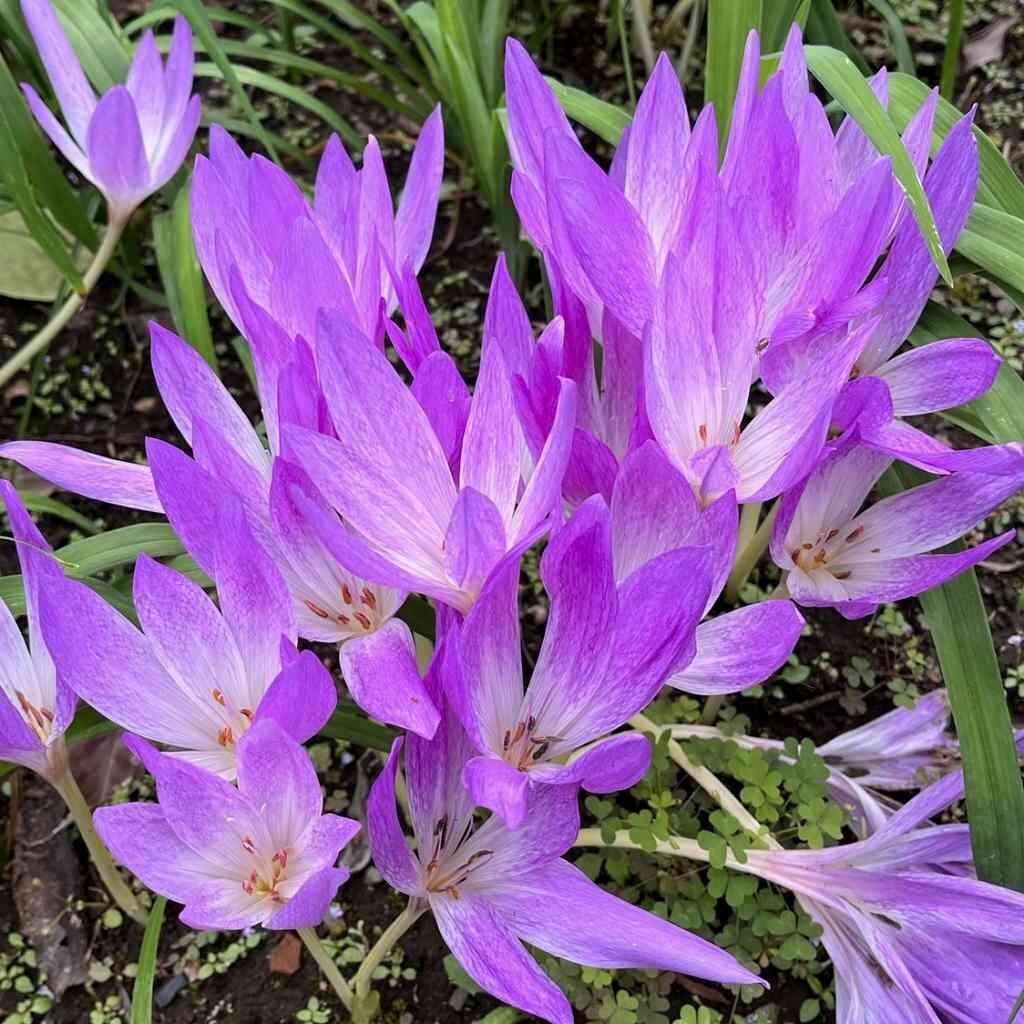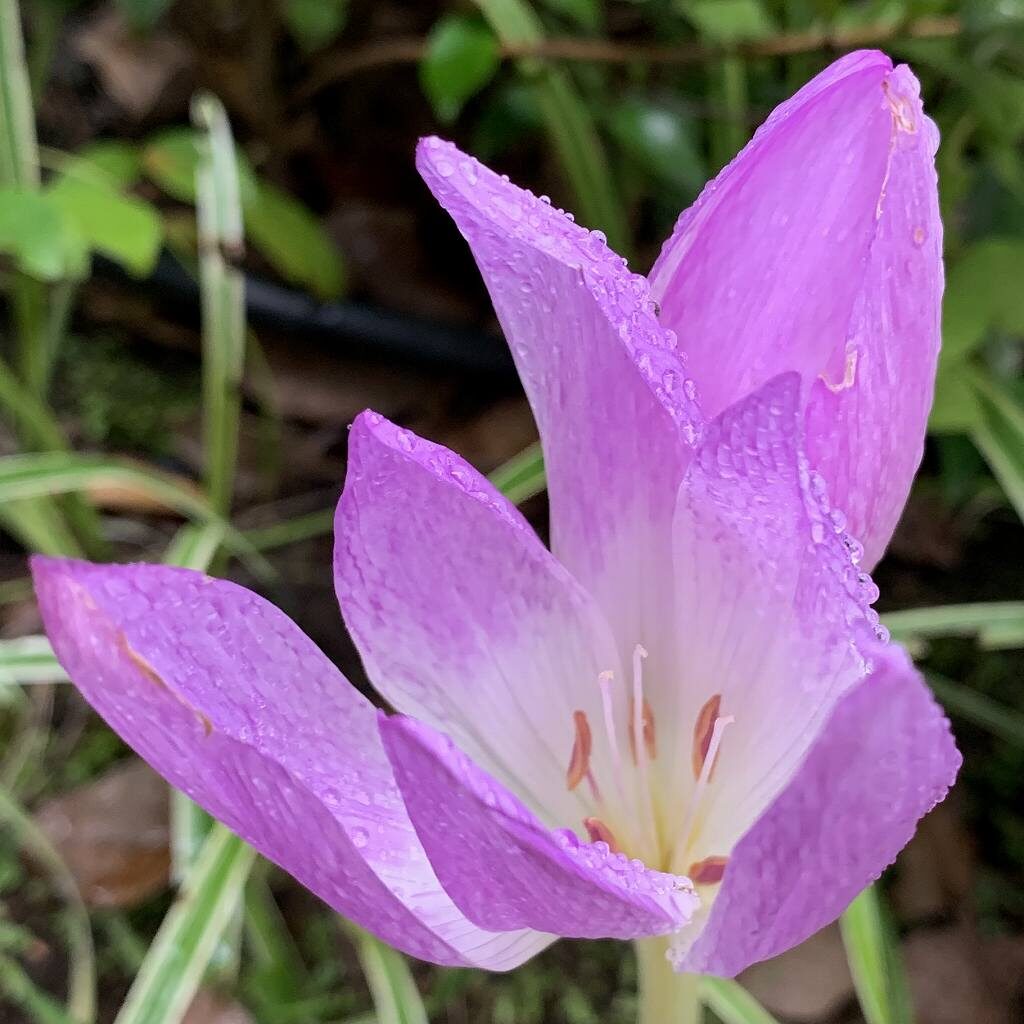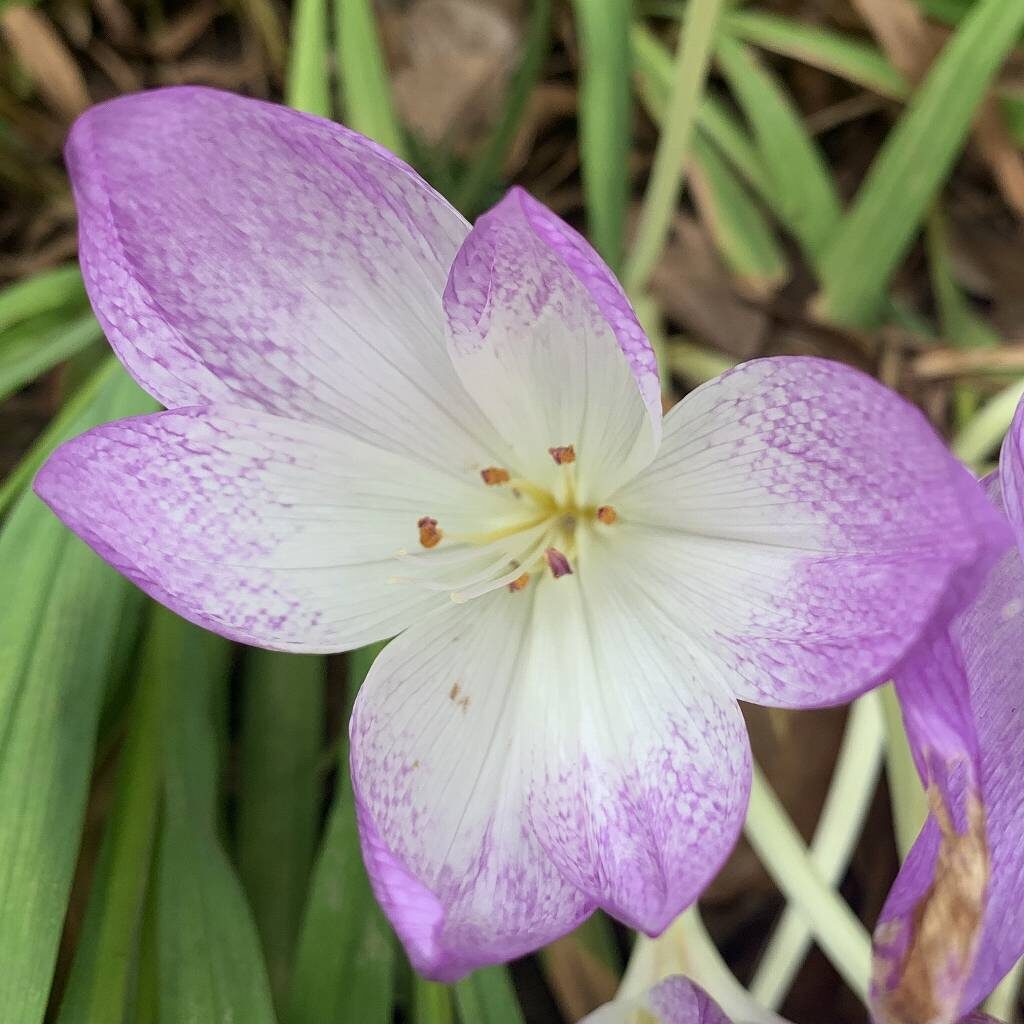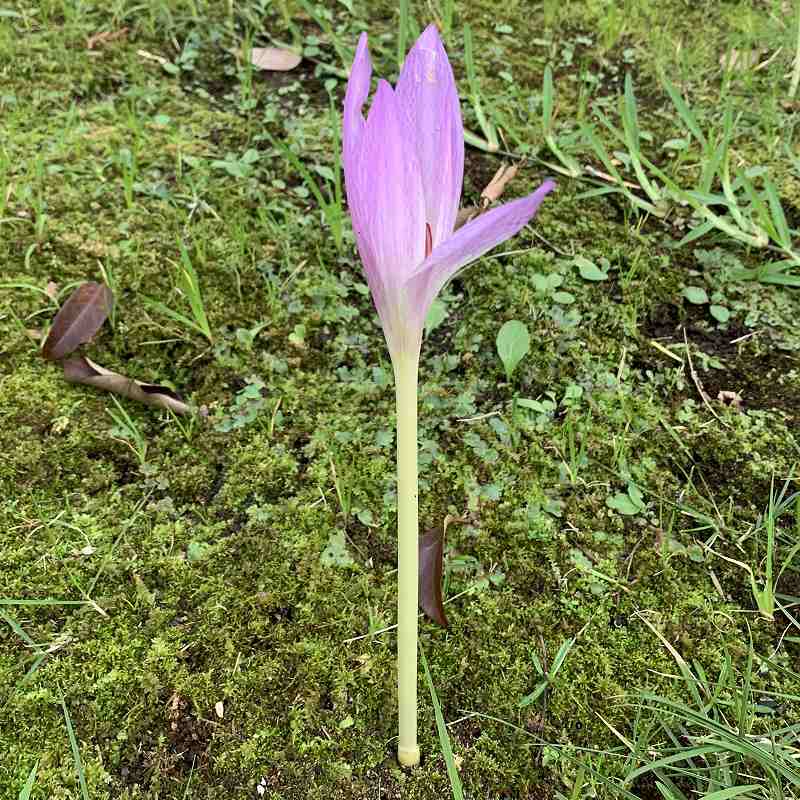イヌサフランは園芸名が「コルチカム」。美しい花を咲かせる一方で、強い毒性があります。花言葉も「楽しい思い出」と「危険な美しさ」。
Colchicum produces beautiful flowers, but is highly toxic. So the flower language is also “pleasant memories” and “dangerous beauty”.
【仮名】イヌサフラン, コルチカム
【和名】犬サフラン
【英名】Colchicum, Autumn Crocus, Meadow Saffron
【学名】Colchicum autumnale
【誕生】09/ 21
【開花】08, 09, 10月
【花色】White, Pink, Purple




イヌサフラン
イヌサフランの来歴
イヌサフランはイヌサフラン科の多年草です。原産地は欧州中南部からアフリカ北部にかけて。クロッカスに似た美しい花を咲かせる一方で、全草に強い毒性があります。そのため、花言葉も「楽しい思い出」とともに「危険な美しさ」。園芸名は「コルチカム」のほうが一般的です。
イヌサフランの名前
イヌサフランの名前は、花が食用の「サフラン」に似ているのに、毒があって食べられないから「犬」がつけられました。ラテン語の属名コルチカムは原種が自生する黒海沿岸アルメニアの古都「コルキス」に由来。種名オータムナーレは「秋」という意味で開花時期を表しています。
イヌサフランの姿形
イヌサフランは、まず球茎から花茎を伸ばします。開花は花被片が6枚、雄しべが6本。花が終わると葉を伸ばします。葉は披針形で光沢があり、互生。花後の蒴果は卵形の緑色で、熟すと褐色に変わります。中は小さな種子がたくさん。球茎は土の中で分球し、年々株を殖やします。
イヌサフランの利用
イヌサフランはアルカロイド系の有機化合物「コルヒチン」を含有。そのまま摂取すると猛毒ですが、球茎や種子から成分を抽出し、その製剤が痛風の治療に用いられます。また、植物の細胞分裂にも作用。4倍体による大型化や、3倍体による不稔化など、品種改良に用いられます。
イヌサフランの毒性
イヌサフランは誤って食べると下痢、嘔吐、知覚麻痺、呼吸困難といった中毒症状が現れ、酷くなると死亡する可能性もあります。茎葉は山菜のギョウジャニンニクに、球茎は野菜のジャガイモやタマネギに、花は着色・着香・薬用のサフランなどに間違えられることも。要注意です。
Colchicum
Colchicum is a perennial plant of the Colchicaceae family. Its origin is Central and Southern Europe to Northern Africa. While it produces beautiful flowers that resemble crocuses, the whole plant is highly toxic. So the flower language is also “pleasant memories” and “dangerous beauty”. The horticultural name “Colchicum” is more common.
Japanese name of Colchicum means “dog saffron”. This is because the flowers resemble the edible saffron, but are poisonous and inedible. The Latin genus name Colchicum comes from the ancient capital of Armenia on the Black Sea coast, Colchis, where the original species grows. The species name Autumnale means “autumn” and represents the flowering time.
Colchicum first extends the flower stalk from the corm. The flowers have 6 tepals and 6 stamens. When the flowers are finished, the leaves grow. The leaves are lanceolate, glossy and alternate. The post-flowering capsules are ovoid green and turn brown when ripe. Many small seeds inside. The corms split in the soil and multiply each year.
Colchicum contains alkaloid organic compound “colchicine”. It is highly toxic if taken as is, but components extracted from the corms and seeds are used to treat gout. It also affects plant cell division. It is used for breed improvement such as enlargement by tetraploid and sterilization by triploid.
If Colchicum is eaten by mistake, poisoning symptoms such as diarrhea, vomiting, paralysis, and dyspnea may occur, and in severe cases, death may occur. The stems and leaves are sometimes mistaken for the wild vegetable Gyoja Garlic, the corms for the vegetables potatoes and onions, and the flowers for coloring, flavoring, and medicinal saffron. Be careful.


